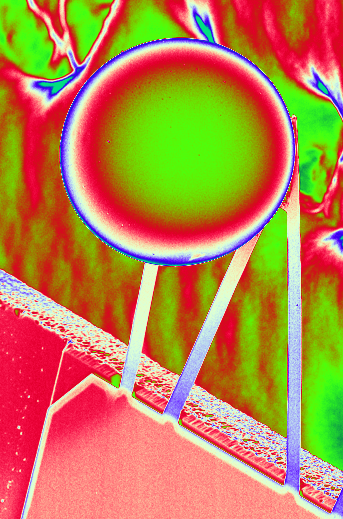Holes may solve quantum quandry
 Australian researchers are doing more groundwork to usher in the age of quantum computing.
Australian researchers are doing more groundwork to usher in the age of quantum computing.
Quantum computers are predicted to be much more powerful and functional than today’s ‘classical’ computers.
One way to make a quantum bit - the basic processing unit of a quantum computer - is to use the ‘spin’ of an electron, which can point either up or down.
To make quantum computers as fast and power-efficient as possible, engineers would like to operate them using only electric fields, which are applied using ordinary electrodes.
Although spin does not ordinarily ‘talk’ to electric fields, in some materials spins can interact with electric fields indirectly.
The interaction that enables spins to talk to electric fields is called the spin-orbit interaction.
Quantum-computing researchers are concerned that when this interaction is strong, any gain in operation speed would be offset by a loss in coherence (essentially, how long quantum information can be preserved).
“If electrons start to talk to the electric fields we apply in the lab, this means they are also exposed to unwanted, fluctuating electric fields that exist in any material (generically called ‘noise’) and those electrons’ fragile quantum information would be destroyed,” says Associate Professor Dimi Culcer.
“But our study has shown this fear is not justified.”
The theoretical studies show that a solution is reached by using holes, which can be thought of as the absence of an electron, behaving like positively-charged electrons. In this way, a quantum bit can be made robust against charge fluctuations stemming from the solid background.
Additionally, the ‘sweet spot’ at which the qubit is least sensitive to such noise is also the point at which it can be operated the fastest.
“Our study predicts such a point exists in every quantum bit made of holes and provides a set of guidelines for experimentalists to reach these points in their labs,” says A/Prof Culcer.
Reaching these points will facilitate experimental efforts to preserve quantum information for as long as possible. This will also provide strategies for ‘scaling up’ quantum bits – ie, building an ‘array’ of bits that would work as a mini-quantum computer.
“This theoretical prediction is of key importance for scaling up quantum processors and first experiments have already been carried out,” says Professor Sven Rogge.
“Our recent experiments on hole qubits using acceptors in silicon already demonstrated longer coherence times than we expected,” says A/Prof Joe Salfi of the University of British Columbia.
“It is encouraging to see that these observations rest on a firm theoretical footing. The prospects for hole qubits are bright indeed.”








 Print
Print